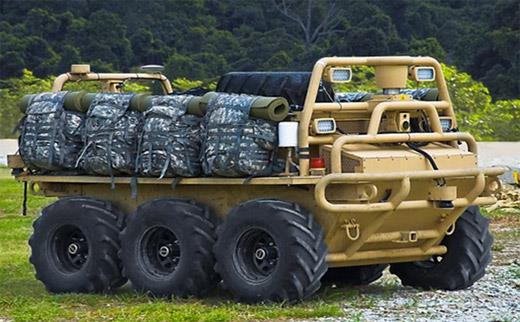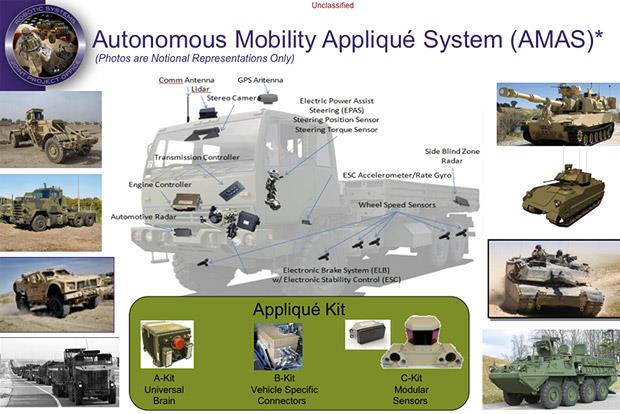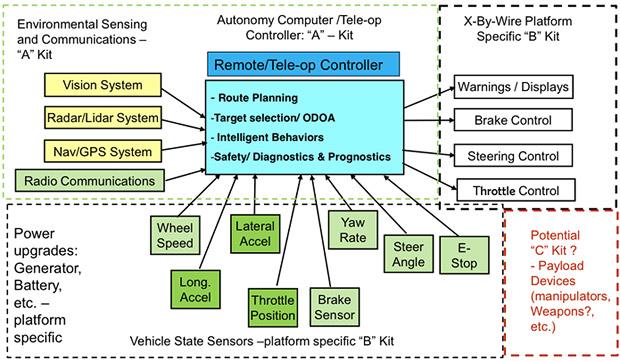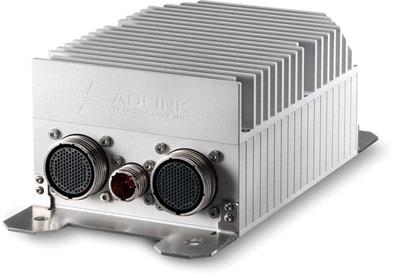- 製品
-
ソリューション
防衛&航空
防衛および航空の分野では、環境の正確な観察、迅速かつ信頼性の高い意思決定、タイムリーな行動が極めて重要です。ADLINKの堅牢なシステムとDDS( Data Distribution Service)が大規模なデータインフラの重要部分となり、情報を収集、保存、分析し、現場の意思決定者に送信します。
詳細はこちらインフォテインメント

ADLINKのゲーミングは、ハードウェア、ソフトウェア、ディスプレイ製品を通じて、グローバルなゲーム機メーカーに包括的なソリューションを提供しています。コンピューターの専門知識と最先端のソフトウェアスタックを独自に組み合わせ、ゲーム業界の要件と規制を深く理解することで、お客様をバックアップし、世界最高のゲームの作成に集中できるようにします。
詳細はこちらヘルスケア

ADLINKは医療用可視化装置と医学的に認証されたソリューションに力を注ぎ、ヘルスケアにおけるデジタル化のニーズを満たします。ADLINKのヘルスケアソリューションは、医療分野におけるPENTAの設計と製造能力を利用し、各医療環境のインテリジェント化へのモデルチェンジを加速させます。
詳細はこちらスマート製造

エッジ・コンピューティングを活用したADLINKスマート・マニュファクチャリング・ソリューションは、より迅速なデータから意思決定までの結果を保証し、半導体および電子機器製造において、より強靭で安全な生産環境を実現します。
詳細はこちら鉄道

当社の堅牢設計のCompactPCI、コンピュータ・オン・モジュール、産業グレードのシステムおよびパネルコンピュータ製品ポートフォリオは、特にオンボードATO/DMIおよびウェイサイドCTC/RBC/TSRS鉄道ソリューションに選ばれています。ADLINKの設計と製造における優れた柔軟性は、世界中のトップクラスの鉄道信号プロバイダーによって利用されています。
詳細はこちらロボティクス

自律移動ロボット(AMR)は、作業者による監視をゼロから最小限に抑えて作業を実行できます。特に学校、病院、ショッピングモール、工場などの施設では、AMRスワームを使用して、運用効率と生活の質を向上させることができます。
詳細はこちら -
パートナー
AMDベースのソリューション
エッジソリューションを実現するリーディングカンパニーであるADLINKがエッジコンピューティングを強化します。エッジ、ネットワーキング、x86コア・アーキテクチャのエッジシステムに幅広く対応するAMDの高性能、セキュアな統合、電力効率の利点を活用できます。産業、医療、オートメーション、およびゲームアプリケーションに最適なRadeon™ RXを搭載したAMD Ryzen™ EmbeddedシリーズをADLINKが活用することで、優れた処理性能とグラフィックス性能を体験できます。
詳細はこちらAmpereベースのソリューション
Ampere AltraベースのCOM-HPCモジュール、開発者向けプラットフォーム、開発キットを含む包括的な製品で、エッジコンピューティングの未来を体験してください。産業オートメーション、自動運転、交通、ヘルスケア、映像監視、エネルギー管理などのアプリケーションにおいて、優れたパフォーマンス、エネルギー効率、TCOの最適化を実現します。
詳細はこちらArmベースのソリューション
Armアーキテクチャに基づき、ADLINKはAmpere、NXP、MediaTek、Qualcomm、Rockchipとも、スマート製造、自動運転、ロボティクス、AMR、ドローン、交通、物流、小売、インフォテインメント、ヘルスケア、セキュリティなど、さまざまな業界のモジュールコンピューティング開発および付加価値ソリューションで協業しています。
プラグアンドプレイ・ツール、開発キット、包括的なシステムにより、ADLINKとArmは開発者のイノベーションを加速し、実現する力を提供します。
詳細はこちらインテルベースのソリューション
ADLINKはインテル®パートナー・アライアンスのチタンメンバーです。モジュラーコンピューティングからシステム対応のユースケースまで、ADLINKはインテルと緊密に連携し、エンドツーエンドのアナリティクスでインテリジェントデバイスの展開を加速するスケーラブルで相互運用可能なソリューションを提供しています。
インテルベースのモジュールを活用することで、ADLINKはエッジAIプラットフォーム開発サポートにより、ネットワーキング、スマート製造、自動運転、AMR、輸送、ヘルスケア、小売、インフォテインメントなどの多様な業界のペインポイントに対応しながら、製品の市場投入までの時間を短縮します。
詳細はこちらMediaTekベースのソリューション
ADLINKとMediaTekは、エッジコンピューティングとエッジAIアプリケーションのための革新的で強力なソリューションを提供する戦略的パートナーです。MediaTekのフラッグシップで電力効率に優れたGenioプラットフォームSoCと、ADLINKの組込み設計および堅牢設計の専門知識を活用し、スマートホーム、ヒューマン・マシン・インタフェース、マルチメディア、産業用IoT、ロボティクスなど、さまざまなIoTユースケースを実現する高性能、エネルギー効率、信頼性の高いモジュールとプラットフォームを提供します。
詳細はこちらNVIDIAベースのソリューション
業界固有の要件を満たすため、ADLINKは、スマート製造、自動運転、AMR、ロボティクス、交通、ヘルスケア、物流、小売、インフォテインメント、AI開発、プロフェッショナルグラフィックス、ゲームなど、該当する業界向けに、NVIDIA Jetsonモジュール、NVIDIA IGXプラットフォーム、RTX Embedded GPUをベースとしたエッジAIプラットフォーム、AIスマートカメラ、医療プラットフォーム、AIポータブルGPUアクセラレータを効率的に開発することができます。
詳細はこちらNXPベースのソリューション
NXPのi.MX 8およびi.MX 9シリーズ技術を活用し、ADLINKは医療、計測、自動化、スマートシティ分野のお客様が総所有コスト(TCO)を削減するためのエッジ接続ソリューションを提供します。NXPの技術とADLINKのエッジコンピューティングにおける研究開発経験を組み合わせることで、重要アプリケーション向けに多用途で動的なソリューションを実現します。
詳細はこちらQualcommベースのソリューション
Qualcommの最先端のロボットおよびドローンソリューションのポートフォリオは、自律型配送、ミッションクリティカルなユースケース、商用およびエンタープライズ向けドローンアプリケーションなど、次世代のユースケースを推進しています。
その中でも、QualcommのQRB5165ソリューションは、5G接続、オンデバイスAIおよび機械学習、優れたコンピューティング、インテリジェントセンシング機能を備えたコンシューマ、エンタープライズ、または産業用ロボットの構築を支援するように設計されています。クアルコムQRB5165を採用することで、ADLINKのモジュールはロボット工学およびインテリジェントシステムにおける5Gの普及を可能にします。
詳細はこちら
-
サポート
-
企業情報
- ホーム
- インダストリー
- 防衛 & 航空
- Defense and Aviation: Applications
- UGV Requirements Push Evolution in HPEC Performance
- ホーム
- インダストリー
- 防衛 & 航空
- Defense and Aviation: Applications
- UGV Requirements Push Evolution in HPEC Performance
- ログイン
- home
- 製品
-
ソリューション
防衛&航空
防衛および航空の分野では、環境の正確な観察、迅速かつ信頼性の高い意思決定、タイムリーな行動が極めて重要です。ADLINKの堅牢なシステムとDDS( Data Distribution Service)が大規模なデータインフラの重要部分となり、情報を収集、保存、分析し、現場の意思決定者に送信します。
詳細はこちらインフォテインメント

ADLINKのゲーミングは、ハードウェア、ソフトウェア、ディスプレイ製品を通じて、グローバルなゲーム機メーカーに包括的なソリューションを提供しています。コンピューターの専門知識と最先端のソフトウェアスタックを独自に組み合わせ、ゲーム業界の要件と規制を深く理解することで、お客様をバックアップし、世界最高のゲームの作成に集中できるようにします。
詳細はこちらヘルスケア

ADLINKは医療用可視化装置と医学的に認証されたソリューションに力を注ぎ、ヘルスケアにおけるデジタル化のニーズを満たします。ADLINKのヘルスケアソリューションは、医療分野におけるPENTAの設計と製造能力を利用し、各医療環境のインテリジェント化へのモデルチェンジを加速させます。
詳細はこちらスマート製造

エッジ・コンピューティングを活用したADLINKスマート・マニュファクチャリング・ソリューションは、より迅速なデータから意思決定までの結果を保証し、半導体および電子機器製造において、より強靭で安全な生産環境を実現します。
詳細はこちら鉄道

当社の堅牢設計のCompactPCI、コンピュータ・オン・モジュール、産業グレードのシステムおよびパネルコンピュータ製品ポートフォリオは、特にオンボードATO/DMIおよびウェイサイドCTC/RBC/TSRS鉄道ソリューションに選ばれています。ADLINKの設計と製造における優れた柔軟性は、世界中のトップクラスの鉄道信号プロバイダーによって利用されています。
詳細はこちらロボティクス

自律移動ロボット(AMR)は、作業者による監視をゼロから最小限に抑えて作業を実行できます。特に学校、病院、ショッピングモール、工場などの施設では、AMRスワームを使用して、運用効率と生活の質を向上させることができます。
詳細はこちら -
パートナー
AMDベースのソリューション
エッジソリューションを実現するリーディングカンパニーであるADLINKがエッジコンピューティングを強化します。エッジ、ネットワーキング、x86コア・アーキテクチャのエッジシステムに幅広く対応するAMDの高性能、セキュアな統合、電力効率の利点を活用できます。産業、医療、オートメーション、およびゲームアプリケーションに最適なRadeon™ RXを搭載したAMD Ryzen™ EmbeddedシリーズをADLINKが活用することで、優れた処理性能とグラフィックス性能を体験できます。
詳細はこちらAmpereベースのソリューション
Ampere AltraベースのCOM-HPCモジュール、開発者向けプラットフォーム、開発キットを含む包括的な製品で、エッジコンピューティングの未来を体験してください。産業オートメーション、自動運転、交通、ヘルスケア、映像監視、エネルギー管理などのアプリケーションにおいて、優れたパフォーマンス、エネルギー効率、TCOの最適化を実現します。
詳細はこちらArmベースのソリューション
Armアーキテクチャに基づき、ADLINKはAmpere、NXP、MediaTek、Qualcomm、Rockchipとも、スマート製造、自動運転、ロボティクス、AMR、ドローン、交通、物流、小売、インフォテインメント、ヘルスケア、セキュリティなど、さまざまな業界のモジュールコンピューティング開発および付加価値ソリューションで協業しています。
プラグアンドプレイ・ツール、開発キット、包括的なシステムにより、ADLINKとArmは開発者のイノベーションを加速し、実現する力を提供します。
詳細はこちらインテルベースのソリューション
ADLINKはインテル®パートナー・アライアンスのチタンメンバーです。モジュラーコンピューティングからシステム対応のユースケースまで、ADLINKはインテルと緊密に連携し、エンドツーエンドのアナリティクスでインテリジェントデバイスの展開を加速するスケーラブルで相互運用可能なソリューションを提供しています。
インテルベースのモジュールを活用することで、ADLINKはエッジAIプラットフォーム開発サポートにより、ネットワーキング、スマート製造、自動運転、AMR、輸送、ヘルスケア、小売、インフォテインメントなどの多様な業界のペインポイントに対応しながら、製品の市場投入までの時間を短縮します。
詳細はこちらMediaTekベースのソリューション
ADLINKとMediaTekは、エッジコンピューティングとエッジAIアプリケーションのための革新的で強力なソリューションを提供する戦略的パートナーです。MediaTekのフラッグシップで電力効率に優れたGenioプラットフォームSoCと、ADLINKの組込み設計および堅牢設計の専門知識を活用し、スマートホーム、ヒューマン・マシン・インタフェース、マルチメディア、産業用IoT、ロボティクスなど、さまざまなIoTユースケースを実現する高性能、エネルギー効率、信頼性の高いモジュールとプラットフォームを提供します。
詳細はこちらNVIDIAベースのソリューション
業界固有の要件を満たすため、ADLINKは、スマート製造、自動運転、AMR、ロボティクス、交通、ヘルスケア、物流、小売、インフォテインメント、AI開発、プロフェッショナルグラフィックス、ゲームなど、該当する業界向けに、NVIDIA Jetsonモジュール、NVIDIA IGXプラットフォーム、RTX Embedded GPUをベースとしたエッジAIプラットフォーム、AIスマートカメラ、医療プラットフォーム、AIポータブルGPUアクセラレータを効率的に開発することができます。
詳細はこちらNXPベースのソリューション
NXPのi.MX 8およびi.MX 9シリーズ技術を活用し、ADLINKは医療、計測、自動化、スマートシティ分野のお客様が総所有コスト(TCO)を削減するためのエッジ接続ソリューションを提供します。NXPの技術とADLINKのエッジコンピューティングにおける研究開発経験を組み合わせることで、重要アプリケーション向けに多用途で動的なソリューションを実現します。
詳細はこちらQualcommベースのソリューション
Qualcommの最先端のロボットおよびドローンソリューションのポートフォリオは、自律型配送、ミッションクリティカルなユースケース、商用およびエンタープライズ向けドローンアプリケーションなど、次世代のユースケースを推進しています。
その中でも、QualcommのQRB5165ソリューションは、5G接続、オンデバイスAIおよび機械学習、優れたコンピューティング、インテリジェントセンシング機能を備えたコンシューマ、エンタープライズ、または産業用ロボットの構築を支援するように設計されています。クアルコムQRB5165を採用することで、ADLINKのモジュールはロボット工学およびインテリジェントシステムにおける5Gの普及を可能にします。
詳細はこちら
-
サポート
-
企業情報








